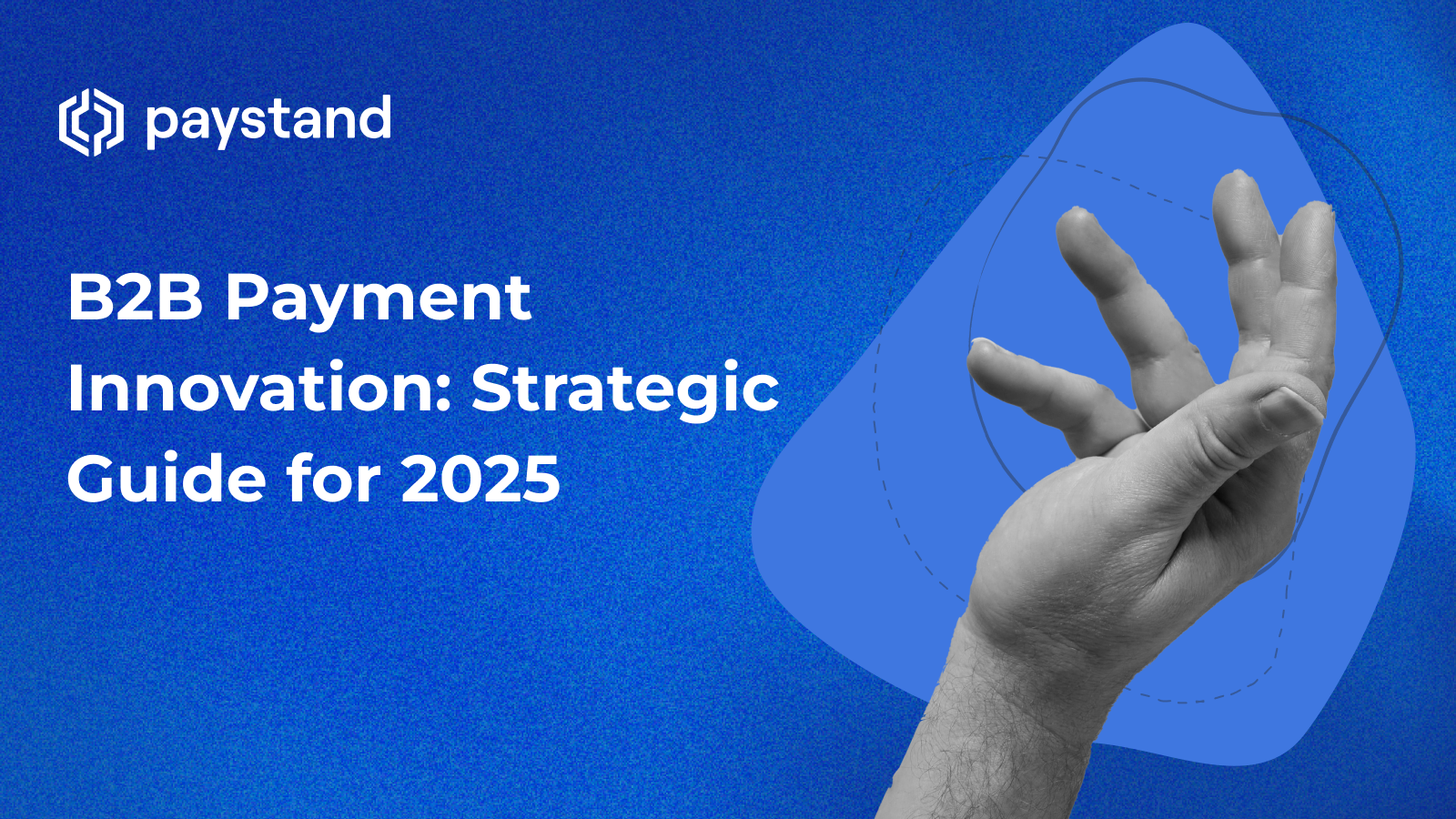B2B Payment Innovation: Strategic Guide for 2025

Table of Contents
- The Evolution of B2B Payments
- Virtual Card Trends
- Mobile B2B Payment Innovation
- AI-Powered Payment Solutions
- Real-Time Payment Systems
- Market Statistics
- Future Outlook
Key Takeaways
- Global B2B payments market continues strong growth with 13.26% CAGR
- ACH Network shows significant increase in B2B payment volume
- E-invoicing market demonstrates robust expansion at 20.26% CAGR
- Accounts receivable automation projected to reach $6.5 billion by 2027
- Digital transformation reducing manual processing by up to 85%
The Evolution of B2B Payments in 2025
The B2B payment landscape continues its digital transformation, with significant growth in electronic payment adoption. According to Research Reports World (2023), the global B2B Payments market, valued at USD 889,436.03 million in 2022, is expected to reach USD 1,877,171.0 million by 2028, growing at a CAGR of 13.26%.
Virtual Card Trends
Virtual cards are showing strong momentum in B2B payments. According to Juniper Research, digital card transactions are predicted to exceed 121 billion globally by 2027, representing a 340% growth from 2022.
Key Statistics:
- The global value of virtual card transactions is expected to reach $6.8 trillion in 2026
- Mastercard studies show virtual cards can drive cost savings of $0.50 to $14 per transaction
Mobile B2B Payment Innovation
Mobile payments continue to transform business transactions. Key statistics include:
- The U.S. mobile payment market was valued at $53.5 billion in 2022
- Projected growth to $607.9 billion by 2030
- Mobile payments currently account for 5% of all online transactions
Cryptocurrency Payments
We’re witnessing a notable shift with cryptocurrency's increasing acceptance and integration. Cryptocurrencies, like Bitcoin, operate on decentralized networks, ensuring transaction transparency and security. Recognizing their advantages, businesses embrace cryptocurrencies as a viable option for B2B transactions.
One factor driving cryptocurrency adoption in B2B payments is its potential to reduce costs. Traditional payment methods involve intermediaries, which leads to extra fees and delays. Decentralization eliminates the need for intermediaries, resulting in quicker and more cost-effective transactions. This appeals to businesses engaged in international trade, where traditional transactions can be cumbersome and expensive.
Blockchain, the technology behind most cryptocurrencies, ensures a secure and transparent payment ecosystem. It facilitates a distributed ledger that records all transactions across computer networks, making it impossible to alter transaction data. This security level is crucial for driving confidence in using cryptocurrency for B2B payments.
Key Statistics
- In 2013, there were only seven cryptocurrencies. Today, there are over 20,000 active cryptocurrencies worth over $1 trillion.
- According to Insider Intelligence, U.S. crypto payment adoption will grow by a 21.3% average annual rate from 2022 to 2025 and worldwide volume by 12.6%.
- There are over 425 million cryptocurrency users worldwide.
- International B2B blockchain transactions could top $1.7 billion by 2025.
Real-Time Payment Systems
According to ACI, real-time payment adoption continues to expand:
- Over 70 countries now support real-time digital payments
- Transaction volume showed 63% year-on-year growth
- Real-time payments accounted for 1.2% share of total U.S. payments volume in 2022
Market Statistics
Recent financial data shows significant market movement:
ACH Network Performance (Nacha, 2023)
- B2B payment volume rose 9.6% to 1.7 billion payments
- Dollar value increased by 1.4% to $13.5 billion
- Continued growth in electronic payment adoption
E-invoicing and Automation (IMARC Group, MarketsandMarkets, 2023)
- Global e-invoicing market CAGR: 20.26% (2023-2028)
- Accounts receivable automation market to reach $6.5 billion by 2027
- Automated payables reducing operating costs by 50%
- Manual processing reduction of 85%
Regional Market Leadership (IMARC Group, 2023)
North America currently leads the global market, followed by:
- Europe
- Asia-Pacific
- Middle East and Africa
- Latin America
Future Outlook
The B2B payments landscape continues to evolve with several key trends:
1. Digital Transformation
- Growing adoption of automated payment solutions
- Increased focus on payment integration
- Enhanced security measures
2. Process Automation
- Reduction in manual processing
- Improved efficiency in accounting
- Enhanced data analytics capabilities
3. Cross-Border Innovation
- Expanded international payment capabilities
- Improved settlement times
- Enhanced security protocols
Navigating the Future of B2B Payments
As we look ahead in 2025, the B2B payment landscape continues to evolve rapidly, driven by technological innovation and changing business needs. The data clearly shows a significant shift toward digital transformation, with businesses increasingly adopting automated solutions to streamline their payment processes.
The growth in virtual cards, mobile payments, and real-time payment systems reflects a broader industry movement toward greater efficiency, security, and cost-effectiveness. With the global B2B payments market on track to nearly double by 2028 and e-invoicing solutions expanding at over 20% annually, businesses that embrace these digital payment technologies will be better positioned to thrive.
For financial leaders and decision-makers, the message is clear: digital payment transformation is no longer optional but essential for maintaining competitive advantage. Organizations that invest in modernizing their payment infrastructure now will benefit from reduced operational costs, improved cash flow management, and enhanced security—all critical factors for success in today's fast-paced business environment.
As payment technologies continue to advance, staying informed about industry trends and leveraging reliable data will be key to making strategic decisions that support long-term business growth and financial resilience.
Learn more about the trends shaping 2025 in our latest ebook.





%20(1)%20(1).jpg?width=100&height=100&name=IMG_3752%20(1)%20(1)%20(1).jpg)